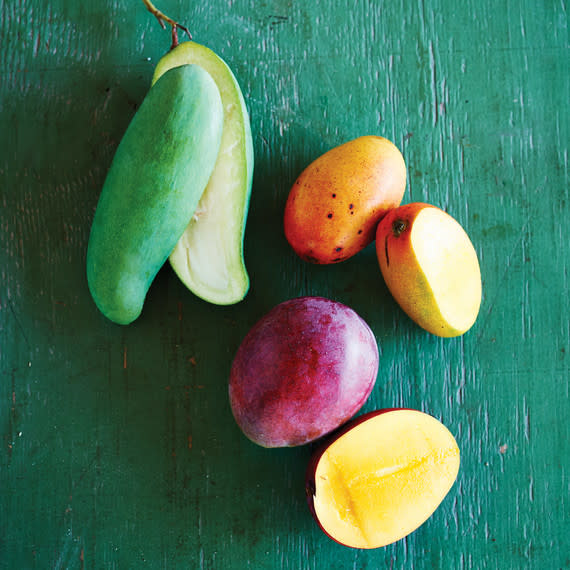How to Find the Perfect Mango

Did you know that in rural villages in Thailand mangoes are left to ripen in straw baskets stashed underneath beds? Members of the household know they're ready when there's an unmistakably sweet fragrance infusing the entire house. Yet while ripe mangos can have a fruity aroma at their stem ends, scent may not be the most practical way to judge whether a mango is ready for eating.
Your best bet for judging a mango's ripeness is to give the mango a gentle squeeze. If it's ripe, it will give slightly (like other produce, such as peaches and avocados, mangos become softer and sweeter as they ripen). Don't be fooled by color, since the red color that appears on some varieties isn't an indicator of ripeness. Always judge by feel. And if you end up buying an unripe mango, store it at room temperature; if it's ready to eat right now, you can place it in the refrigerator to slow down the ripening process.
Related: The Smart Cook's Guide to Buying and Using Fresh Herbs
These days, you'll find a wide range of mangoes in supermarkets (there are over 500 known varieties!). One we're particularly taken by is the small, creamy, and sweet honey mango, which has a bright yellow skin that wrinkles when it's ripe. It's from Mexico, and you may have also seen it sold as an Ataulfo or champagne mango. Other varieties you'll spot in supermarkets are the Francis (bright yellow skin with green overtones; tastes rich, spicy, and sweet); Haden (bright red, tempered with green and yellow; has an aromatic flavor); and Tommy Atkins (a dark red color with green and yellow accents; mildly sweet in flavor). And while most mangoes do have a peak season—which is usually from March to July—they're usually available year-round.
One mango packs 100% of your daily vitamin C needs, as well as a hefty dose of fiber and vitamin A. We love mangoes for their sweet, juicy taste and adaptability, they shine in everything from desserts to salads to salsa. They're also great prep-ahead fruits; you can peel and cube them, and place them in an airtight container in the refrigerator for several days or in the freezer (they're great in smoothies) for up to six months

